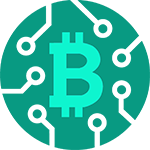
Defi promises a future free from centralized control. It has unlocked a new world where you can borrow money without a bank, earn interest on your crypto holdings at rates exceeding traditional savings accounts, or trade assets directly, peer-to-peer, without relying on intermediaries. One of defi’s key incentives is to break down barriers that have excluded vast parts of the global population from financial services.
Neobanks, on the other hand, are digital-only banks that operate online, with no physical branches. Due to their user-centric approach, flexibility, and low fees, neobanks and crypto apps like Revolut, N26, Chime, and the Brighty App have become very popular, making banking more accessible and convenient for millions.
So what about the intersection of these two sectors? Could neobanks leverage their tech infrastructure and intuitive UX to tackle defi’s complexity and build a more inclusive financial system? Let’s explore how neobanks can democratize defi products by acting as intermediaries between traditional finance (tradfi) and defi.
Defi’s rugged terrain
In the past few years, the sector has attracted a wide range of tech pioneers, with the total value locked in defi protocols surpassing $195 billion by May 2024. Interestingly, traditional financial institutions have also been dipping their toes into decentralized finance, offering custody services for digital assets and exploring collaborations.
One of the latest key trends in the space is the integration of artificial intelligence (AI) and machine learning. These technologies are already making a significant impact in defi across several key areas, such as security, chatbots, operational efficiency, risk management, and personal financial advice.
Still, navigating defi’s uncharted territories can feel like scaling Mount Everest in flip-flops: its complexity and technical barriers remain quite high for the average user. Despite the recent advances, security also remains a significant concern. Additionally, despite the development of cross-chain bridges and interoperable solutions, defi protocols often operate in silos, hindering interaction; regulatory issues cannot be ignored either.
Here’s where neobanks, sleek and user-friendly fintech prodigies, have the potential to become the Sherpas of the new financial revolution.
Neobanks: Linking defi to the masses
One of the biggest hurdles to defi adoption is the inherent complexity of its protocols. Deciphering cryptic interfaces, managing unfamiliar wallets, and fear of irreversible mistakes create a significant barrier to entry, even for tech-savvy individuals. Neobanks, focusing on intuitive interfaces and user experience excellence, can be the game-changers in this domain.
Through seamless integration of defi functionalities within existing neobank platforms, users could access educational materials and explore different defi products—all within the familiar and trusted environment.
Tackling security: From the Wild West to Fort Knox
Security concerns are another major hurdle in defi adoption. Horror stories of hacked wallets and lost funds haunt the crypto space. Neobanks, with their robust security infrastructure and focus on regulatory compliance, can provide users with much-needed peace of mind.
Imagine a world where neobanks act as custodians of your defi assets, offering the same level of security you expect from your traditional bank. This includes secure storage of digital assets, advanced fraud prevention measures, and clear communication about potential risks associated with defi. By prioritizing security, neobanks can foster trust and encourage broader participation in the defi ecosystem.
Breaking down the silos, building trust
By acting as aggregators, bridges, and curators, neobanks have the potential to transform the fragmented defi landscape into a more unified and user-friendly ecosystem. First, they can leverage their user-friendly platforms to aggregate a variety of defi services. That way, users would have easy access to lending, borrowing, trading, and other defi functionalities in one app, simplifying their defi experience and eliminating the need to navigate a multitude of separate protocols.
Second, neobanks can act as bridges between different defi protocols, enabling seamless interoperability, such as initiating a loan using one protocol and seamlessly transferring those funds to another protocol for investment.
Third, neobanks can leverage their expertise to curate a selection of high-quality defi products for their users. This curation process would involve careful assessment of security, risk factors, and potential returns, providing users with a safe and convenient way to explore the world of defi.
Bridging the regulatory gap
One of the biggest challenges facing defi is the current regulatory landscape. Regulations vary significantly across jurisdictions, creating uncertainty for both users and developers.
Neobanks, with their established relationships with regulators and experience navigating financial compliance, can leverage their expertise to create tools and services that help defi projects comply with relevant regulations. This could include know your customer (KYC) and anti-money laundering (AML) solutions tailored explicitly for the defi space.
Beyond that, they can use their voice to advocate for clear and sensible regulations that foster innovation in defi while protecting consumers, working with regulators to create a framework that encourages responsible development and defi adoption.
A user-friendly gateway to a democratized finance
Neobanks and defi represent two sides of the financial innovation coin. While defi promises a democratized future, its complexity remains a barrier to entry. Neobanks, with their user-centric approach, have the potential to bridge this gap.
Today, I envision a future where neobanks transform from convenient banking apps to gateways to a secure, curated, unified defi experience. That future fosters financial inclusion, empowers individual users, and unlocks the true potential of decentralized finance. As defi continues to evolve, the collaboration between neobanks and defi protocols can make conquering the financial landscape so much easier.
Tổng hợp và chỉnh sửa: ThS Phạm Mạnh Cường
Theo Crypto News
